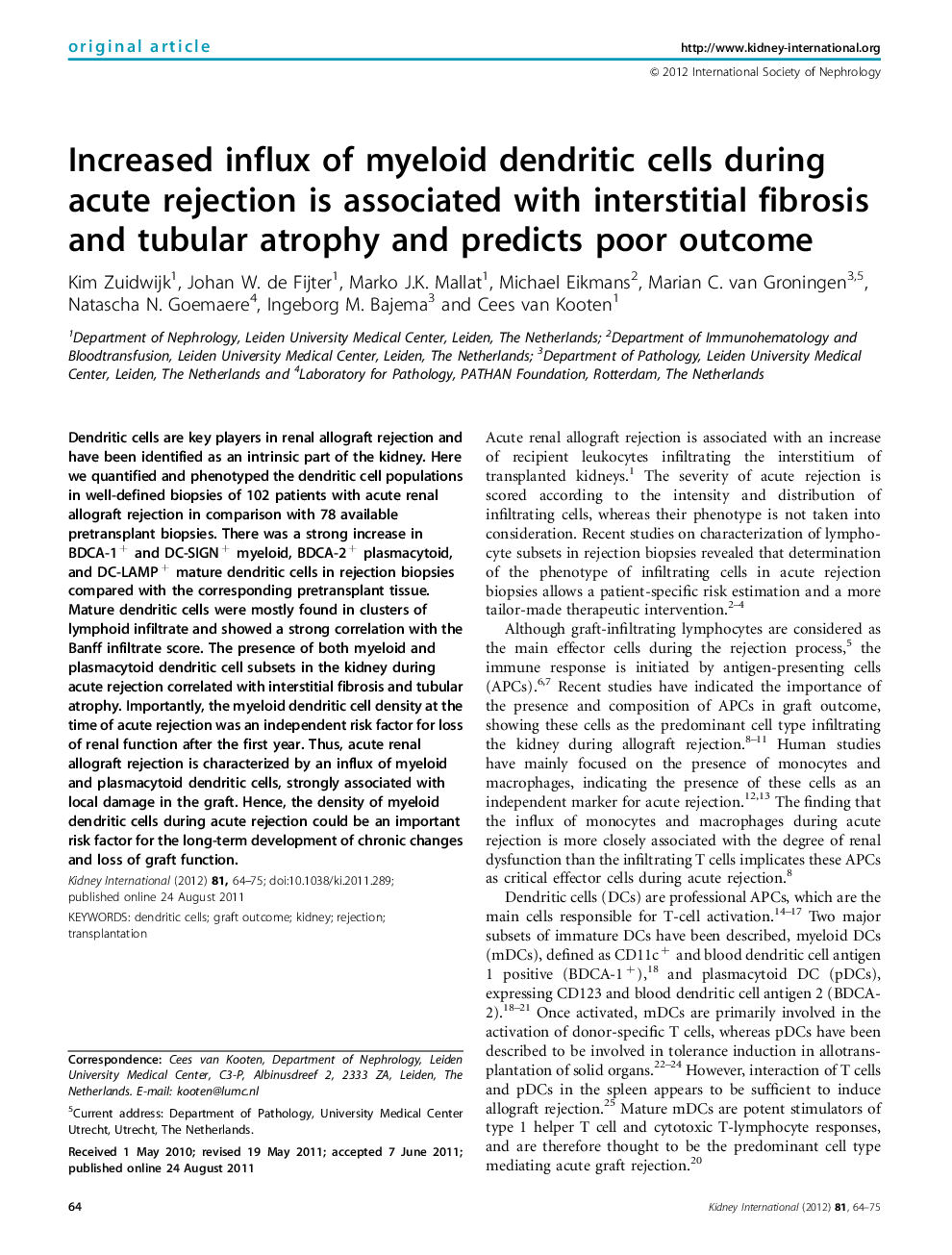| کد مقاله | کد نشریه | سال انتشار | مقاله انگلیسی | نسخه تمام متن |
|---|---|---|---|---|
| 3883656 | 1249434 | 2012 | 12 صفحه PDF | دانلود رایگان |

Dendritic cells are key players in renal allograft rejection and have been identified as an intrinsic part of the kidney. Here we quantified and phenotyped the dendritic cell populations in well-defined biopsies of 102 patients with acute renal allograft rejection in comparison with 78 available pretransplant biopsies. There was a strong increase in BDCA-1+ and DC-SIGN+ myeloid, BDCA-2+ plasmacytoid, and DC-LAMP+ mature dendritic cells in rejection biopsies compared with the corresponding pretransplant tissue. Mature dendritic cells were mostly found in clusters of lymphoid infiltrate and showed a strong correlation with the Banff infiltrate score. The presence of both myeloid and plasmacytoid dendritic cell subsets in the kidney during acute rejection correlated with interstitial fibrosis and tubular atrophy. Importantly, the myeloid dendritic cell density at the time of acute rejection was an independent risk factor for loss of renal function after the first year. Thus, acute renal allograft rejection is characterized by an influx of myeloid and plasmacytoid dendritic cells, strongly associated with local damage in the graft. Hence, the density of myeloid dendritic cells during acute rejection could be an important risk factor for the long-term development of chronic changes and loss of graft function.
Journal: Kidney International - Volume 81, Issue 1, 1 January 2012, Pages 64–75